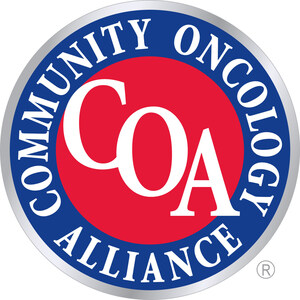New Study Reveals 340B Program Significantly Larger Than Previously Understood
340B Hospitals Costing Medicare and Beneficiaries Over 50 Percent More for Cancer Care
WASHINGTON, Sept. 15, 2015 /PRNewswire/ -- A new study released today from the Community Oncology Alliance (COA) finds that the 340B drug discount program is significantly larger than previous estimates have shown. Much of the growth is concentrated in oncology drugs for which 340B hospitals cost Medicare and beneficiaries more than community oncology clinics.
The study, from the Berkeley Research Group (BRG) and commissioned by COA, documents that hospitals participating in the 340B program accounted for 58 percent of all Medicare Part B hospital outpatient drug reimbursements in 2013. For just oncology drugs, 340B hospitals accounted for over 60 percent of reimbursements. Both metrics saw double-digit growth during the study period of 2010-2013, increasing from 43 and 47 percent respectively. This growth is poised to continue, as more hospitals become 340B eligible.
"The 340B program is a critical safety net for patients in need in the hospital setting," said Bruce Gould, MD, president of COA and a practicing community oncologist with the Northwest Georgia Oncology Centers in Marietta, Ga. "However, I am shocked at how big the program is, as revealed by this new study, and am very concerned about the higher costs of cancer treatment for patients and Medicare in 340B sites."
The study documents that the average reimbursement for Part B oncology drugs is 52 percent higher in 340B hospitals than in community cancer clinics, when compared on a per Medicare beneficiary basis. Between 2010 and 2013, 340B hospitals saw a 123 percent increase in total Part B reimbursement for oncology drugs. This compares to a 31 percent increase at non-340B hospitals and a five percent decrease to community oncology clinics over the same period.
"This study adds to the findings from GAO and others that 340B has not only grown way beyond the original congressional intent but also that 340B hospitals are costing Medicare and the seniors they treat more for cancer care," said Ted Okon, executive director of COA. "With so much attention on the escalating costs of cancer drugs, Congress has to address the run-away 340B program, which has huge profit incentives for hospitals, and its role as a major driver of cancer care costs."
A recent study by the independent Government Accountability Office (GAO) on the 340B program concluded in part that, "The financial incentive to maximize Medicare revenues through the prescribing of more or more expensive drugs at 340B hospitals also raises concerns… Not only does excess spending on Part B drugs increase the burden on both taxpayers and beneficiaries who finance the program through their premiums, it also has direct financial effects on beneficiaries who are responsible for 20 percent of the Medicare payment for their Part B drugs. Furthermore, this incentive to prescribe these drugs raises potential concerns about the appropriateness of the health care provided to Medicare Part B beneficiaries."
Additional highlights from the BRG study include:
- Hospitals newly enrolled in the 340B program since 2010 accounted for almost one-fourth (23 percent) of the total 340B Part B hospital outpatient drug spend in 2013.
- From 2010 to 2013, the percentage of total hospital outpatient revenue at 340B disproportionate share hospitals (DSH) increased from 37 percent to 40 percent, even though the count of total 340B DSH hospitals remained almost unchanged.
- At the same time, total outpatient revenue at DSH hospitals increased nearly 10 percent, even though the total number of 340B DSH hospitals remained almost unchanged. This implies that, on average, 340B DSH hospitals have larger outpatient facilities than their non-340B counterparts, and this gap is widening.
The study utilized a combination of Medicare fee-for-service (FFS) hospital outpatient claims, Medicare FFS physician office claims, hospital cost reports, and Office of Pharmacy Affairs (OPA) data for the period from 2010 to 2013.
A full copy of the study and methodology are available on the COA website at www.CommunityOncology.org or directly at http://bit.ly/1URk7tS.
About Community Oncology Alliance (COA)
The Community Oncology Alliance (COA), a non-profit organization, is the leader in advocating for patients and their providers in the community cancer care setting, where almost 70 percent of Americans with cancer are treated. The mission of COA is to strive that cancer patients receive quality, affordable, and accessible cancer care, which is physician directed, in their own communities. COA has pioneered policy on the Oncology Medical Home (OMH) and payment reform for cancer care, and provides resources for community oncology practices to become OMHs. COA members have testified before Congress, appeared on television, and are quoted extensively in the press on topics ranging from Medicare policy to cancer care delivery. Among other initiatives, COA maintains active networks of patient advocates (CPAN), practice administrators (CAN), and pharmacy personnel (COPA) dedicated to enhancing community cancer care. More information can be found at www.CommunityOncology.org.
SOURCE Community Oncology Alliance
Related Links
http://www.CommunityOncology.org
WANT YOUR COMPANY'S NEWS FEATURED ON PRNEWSWIRE.COM?
Newsrooms &
Influencers
Digital Media
Outlets
Journalists
Opted In





Share this article